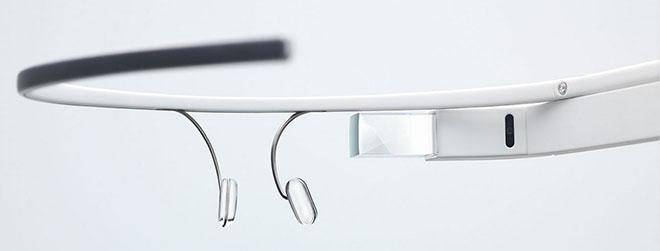Reports on Friday confirmed that Google's forthcoming wearable computing device, Google Glass, will to some extent be compatible with Apple's iPhone, but the degree of interoperability between the two devices remains a mystery.
Earlier on Friday, The Verge's Joshua Topolsky posted a first-person account of his experience trying out Google's face-mounted device. In it, Topolsky described the device's connectivity options as such:
The device gets data through Wi-Fi on its own, or it can tether via Bluetooth to an Android device or iPhone and use its 3G or 4G data while out and about. There’s no cellular radio in Glass, but it does have a GPS chip.
The manner in which Glass connects to a mobile device may determine a good deal of its functionality, especially given the tasks Google has shown the device performing. Demo videos for Glass show users snapping pictures, recording videos, and sending and receiving texts messages.
For Android devices, where Google controls the platform and will likely build in compatibility, this is no problem. For Apple's iPhone, though, Google could run into issues with APIs. iOS has APIs to allow devices — such as the Pebble and Metawatch smartwatches — to display text messages and iMessages from an iPhone. Those devices, though, skirt the issue by having their own custom-built apps running on the iPhone, limiting systems-level access.
Speaking to Glass's interoperability with the iPhone, a Google representative told AppleInsider that the device has its own Wi-Fi, has no cellular radio, has a GPS chip, and can tether via Bluetooth to an Android or iPhone device to access data: the same details reported by Topolsky.
Asked if this meant that Glass would have its own dedicated app on either platform or if Android would benefit from added functionality not available to iPhone users, we were told that the company had "no further details to share right now."
It seems unlikely that Google would limit Glass' capabilities on a rival platform, given the company's willingness to bring its services to Apple's iOS. Still, questions remain regarding just how much Glass will be able to do and how it will manage to do so. Google will likely reveal more about the device in the lead up to this year's Google I/O, given the device is expected to launch later this year for around $1,400.
 Kevin Bostic
Kevin Bostic







-m.jpg)






 Charles Martin
Charles Martin
 Christine McKee
Christine McKee
 Wesley Hilliard
Wesley Hilliard
 Malcolm Owen
Malcolm Owen
 Andrew Orr
Andrew Orr
 William Gallagher
William Gallagher
 Sponsored Content
Sponsored Content







70 Comments
It'll be as compatible as Google Maps was before getting the heave-ho... ;)
Hmm, that video looked totally shyte, but yet I think they are onto something.
It's only fair they do this. Why should Android users be the only ones that get to look like complete pricks?
It's only fair they do this. Why should Android users be the only ones that get to look like complete pricks?
We need a chart or something to define the status of the person based on the technology they're wearing.
If Bluetooth headsets make people look like 'douchebags' and glasses make them look like 'complete pricks', how must the full VR headsets of the early '90s make people appear?
What about those mini-headsets that fit right in the ear? Just tiny bags? And the tooth-installed ones must be something entirely different.
What about watches? Has there been enough gap between always wearing one and not needing to wear one for the concept of wearing one to warrant a negative name?
I'd sort of like a small clock right in my wrist that only tells time. In my wrist. As in "changes the pigment of the skin cells to show numbers". As long as it doesn't mess with my arm hair, that'd be cool. I could get it in Palatino font!
Much as I love apple gear, I really don't see myself wearing either and iWatch or Glass ... far too intrusive and geeky. But then, I still think people look daft, like they're talking to themselves, when using bt headsets. Maybe geeky really is the new cool.